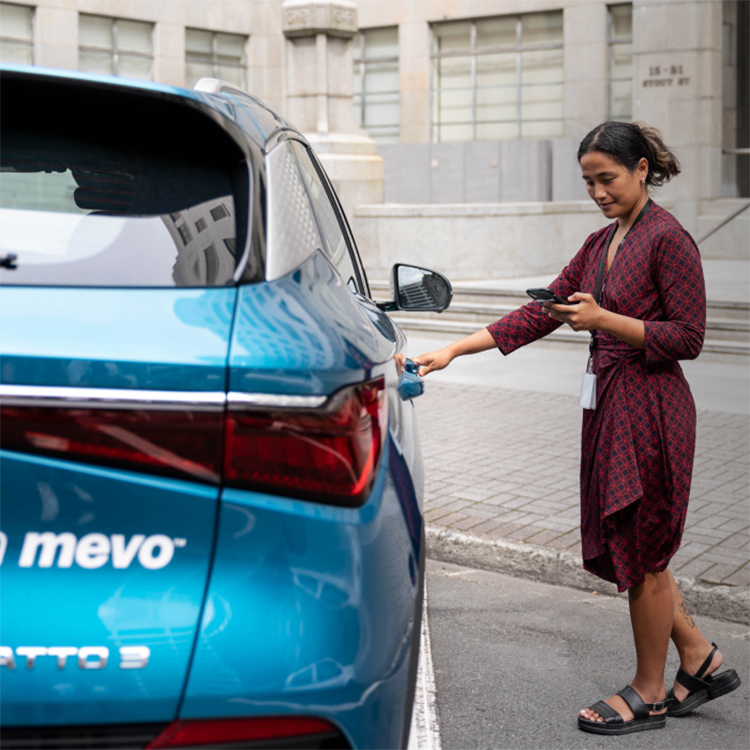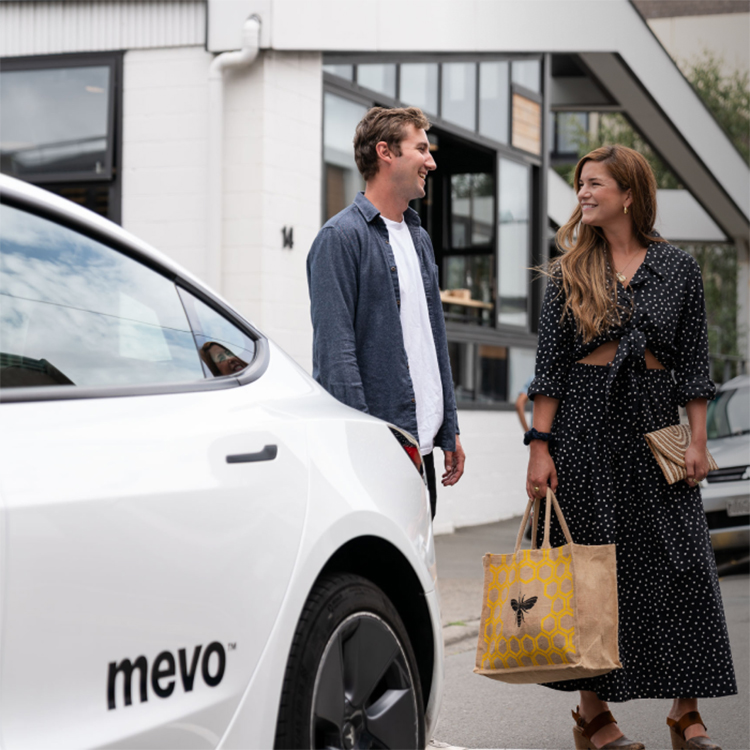
Wheel Love: a 2006 Porsche Cayman
Dom Nathan shares what he loves about his 2006 Porsche Cayman, both as a daily drive and on the track.
22 October 2025
My first Mevo experience does not start well. There is no car.
Standing at an intersection in downtown Auckland, my location arrow in the Mevo app tells me that I should be right next to a Suzuki Swift, but there is nothing but bare concrete.
With the clock ticking on the countdown to rush hour, I call the support line. Zoe from the Mevo team apologetically resets the Swift’s GPS and directs me around the corner to where it is parked on the side of the road. My phone vibrates; the doors click open and I’m ready to begin my trip.
From that point, Mevo’s carshare system proves to be smooth sailing. Or, more accurately, driving.

With vehicles dotted around inner-city streets available to hire at the tap of a screen for as long as you need them, Mevo is an easy and cost-effective way to get around.
So, how does the system work?
A Kiwi-owned and operated company, Mevo first launched in Wellington at the end of 2016 and has grown to include Hamilton, Auckland and most recently Nelson.
The platform operates as a blend of technology and accessibility – making it easy to use a car when you need one and not having to worry about it when you don’t.
“The average car, which is people’s second largest purchase after a house, gets used on average 4% of the time,” states Erik Zydervelt, Mevo’s Founding Director and CEO. “That means that we’re spending the second largest sum of money in our budgets on something that sits around unused 96% of the time.”
That inefficiency, combined with the costs, environmental and social impacts of having so many vehicles clogging up our city roads was what propelled Erik and co-founder Finn Lawrence to find a different way of doing things.

“You know technology is really good when it feels like magic,” Erik says. “Mevo is about as complex as calling an elevator. You open the app and tap the screen to find your car. You tap again to unlock it. That’s it.”
And thankfully, as I discovered, there is a real human support team just a phone call away who can help in the case of a technical glitch.
When it comes to parking, the Mevo team has negotiated access to council operated streetside parking spots. “Residential, time restricted – all of those are fine,” Erik says. “Councils like to work with us because we help to reduce emissions, congestion and increase productivity.”
The Mevo platform operates on a time-based system, although different tiers of vehicles are charged at different rates – a Tesla or BYD costs more per hour than a Suzuki Swift. “You pay by either the minute, the hour or the day,” Erik explains. “The minutes tick up for around 24-25 minutes, then you switch to the hour rate, meaning the rest of that hour is effectively free. You pay per hour until you get to five hours, and then you’d get the day rate. If you’re using a vehicle off-peak – from 5pm until 9am – you get the whole evening but only pay for two hours.”
Fuel or charge is also included in the pricing if you’re taking a longer trip – up to 200km per day is included – but most vehicles are fuelled and ready to go. “If do you need to fill up, you can pull up to any BP and refuel directly with the Mevo app,” Erik says. “The app knows where you are so you pick your pump and the app will unlock it. We take care of the payment. For EVs you can charge at any Chargenet station, and it’s all done through our app.”
As with rideshare, there is an additional charge to pick up or drop off a Mevo at an airport, but the convenience factor is astonishing. I finish my Mevo experience at Auckland Airport. There’s nothing quite like parking the car in a designated spot right next to the terminal, unloading luggage into a trolley, tapping my screen one last time and walking away.